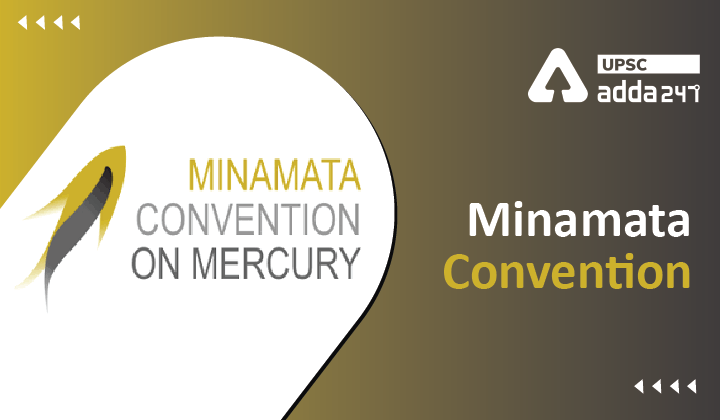Table of Contents
Minamata Convention UPSC: Relevance
- GS 3: Conservation, environmental pollution and degradation, environmental impact assessment.
Minamata Convention on mercury: Context
- 4th Conference of Parties (COP 4) of Minamata Convention is currently under progress in Bali, Indonesia.
What is Minamata convention?
- Minamata convention on mercury is the most recent global agreement that aims to protect human health and the environment from the harmful effects of mercury and its compounds.
- Minamata Convention year: The Minamata Convention on Mercury is an international environmental treaty, adopted in 2013.
- What is Minamata? Minamata is named after the bay in Japan where, in the mid-20th century, mercury-tainted industrial wastewater poisoned thousands of people, leading to severe health damage that became known as the “Minamata disease.”
- The Minamata Convention entered into force on 16 August 2017, on the 90th day after the date of deposit of the 50th instrument of ratification, acceptance, approval or accession.
- Is Minamata convention legally binding? Minamata convention is the world’s first legally binding treaty, to phase out this highly toxic substance.
Minamata COP
- Since the entry into force of the Minamata Convention in August 2017, the COP held its first meeting in September 2017, its second meeting in November 2018 and its third meeting from 25 to 29 November 2019 in Geneva.
| Minamata Convention (Place) | Year |
| Geneva | 2017 |
| Geneva | 2018 |
| Geneva | 2019 |
| Bali | 2022 |
Minamata Convention: Major highlights
- ban on new mercury mines,
- the phase-out of existing ones,
- the phase-out and phase-down of mercury use in a number of products and processes,
- control measures on emissions to air and on releases to land and water, and
- the regulation of the informal sector of artisanal and small-scale gold mining.
- The Convention also addresses interim storage of mercury and its disposal once it becomes waste, sites contaminated by mercury as well as health issues.
Read about environmental conventions for UPSC
Minamata convention and India
- India ratified the Minamata convention in 2018.
- The approval includes ratification of the Minamata Convention India on mercury along with flexibility for continued use of mercury-based products and processes involving mercury compound up to 2025.
- The Minamata Convention on Mercury will be implemented in the context of sustainable development with the objective to protect human health and environment from the anthropogenic emissions and releases of mercury and mercury compounds.
- The Convention protects the most vulnerable from the harmful effects of mercury and also protects the developmental space of developing countries. Therefore, the interest of the poor and vulnerable groups will be protected.
- The Minamata Convention on Mercury will further urge enterprises to move to mercury-free alternatives in products and non-mercury technologies in manufacturing processes. This will drive research & development, and promote innovation.
Mercury pollution
- Mercury is a naturally-occurring heavy metal that is found in air, soil, and water. Mercury pollution, however, is caused by human activities, such as mining and fossil fuel combustion.
- Mercury emitted into the air eventually settles into water or onto land where it can be washed into water.
- Once deposited, certain microorganisms can change it into methylmercury, a highly toxic form that builds up in fish, shellfish and animals that eat fish.
- Most human exposure to mercury is from eating fish and shellfish contaminated with methylmercury.
- Exposure to mercury threatens our health.
- Even developing foetuses and young children are seriously impacted by mercury pollution
- Besides humans, mercury pollution also harms wildlife and ecosystems.
UPSC favourite topics





 TSPSC Group 1 Question Paper 2024, Downl...
TSPSC Group 1 Question Paper 2024, Downl...
 TSPSC Group 1 Answer key 2024 Out, Downl...
TSPSC Group 1 Answer key 2024 Out, Downl...
 UPSC Prelims 2024 Question Paper, Downlo...
UPSC Prelims 2024 Question Paper, Downlo...





